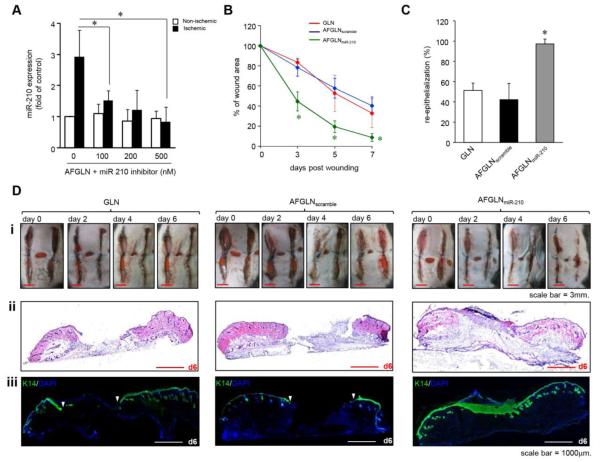Figure 3.
(A) miR-210 expression from murine non-ischemic and ischemic wound-edge tissue 24h after intradermal delivery of AFGLNmiR-210. (n=4). * p<0.01 compared to AFGLN, ANOVA. (B) Wound closure after delivery of empty GLN, AFGLNscramble and AFGLNmiR-210. (n=5), * p<0.001 compared to d0; ANOVA. (C) The percentage of re-epithelialization at day 6 post wounding was plotted graphically. (n=3), * p<0.001; ANOVA. (D) (i) Digital photographs of murine ischemic wound at days 0, 2, 4 and 6 after delivery of empty GLN, AFGLNscramble and AFGLNmiR-210. (ii) H&E images stained sections from ischemic wounds at day 6 post-wounding. (iii) Wound cross sections were stained with anti-keratin 14 antibody and counterstained with DAPI to show re-epithelialization at day 6 following treatment with GLN, AFGLNscramble and AFGLNmiR-210. (n=4).

